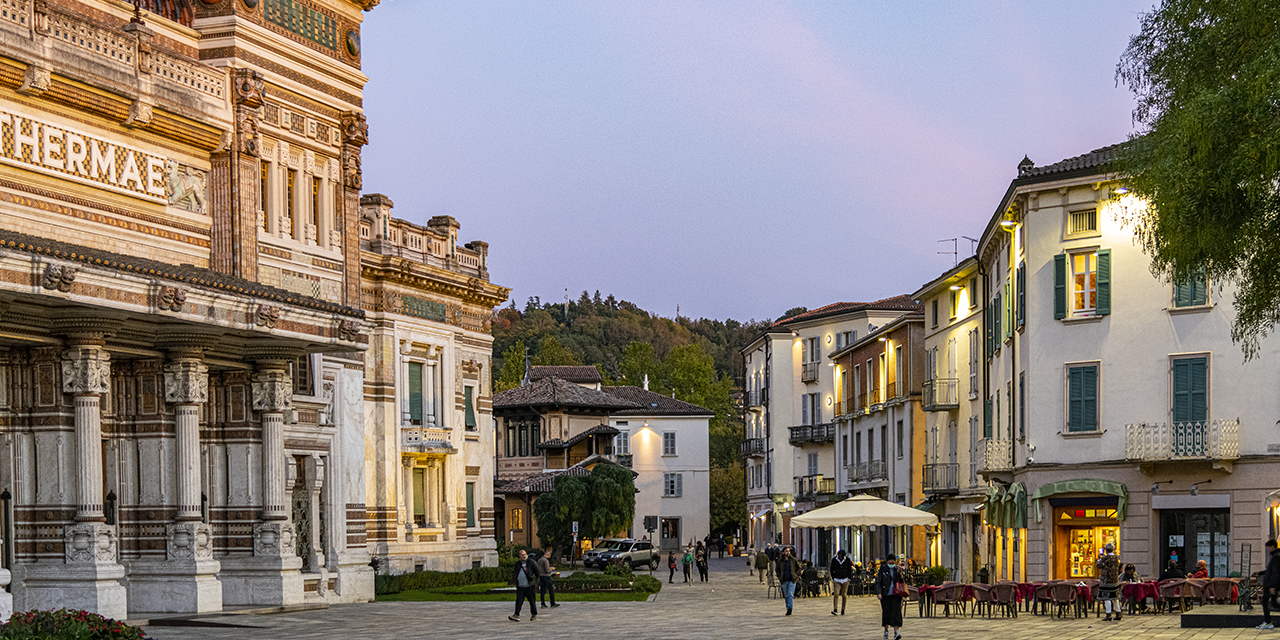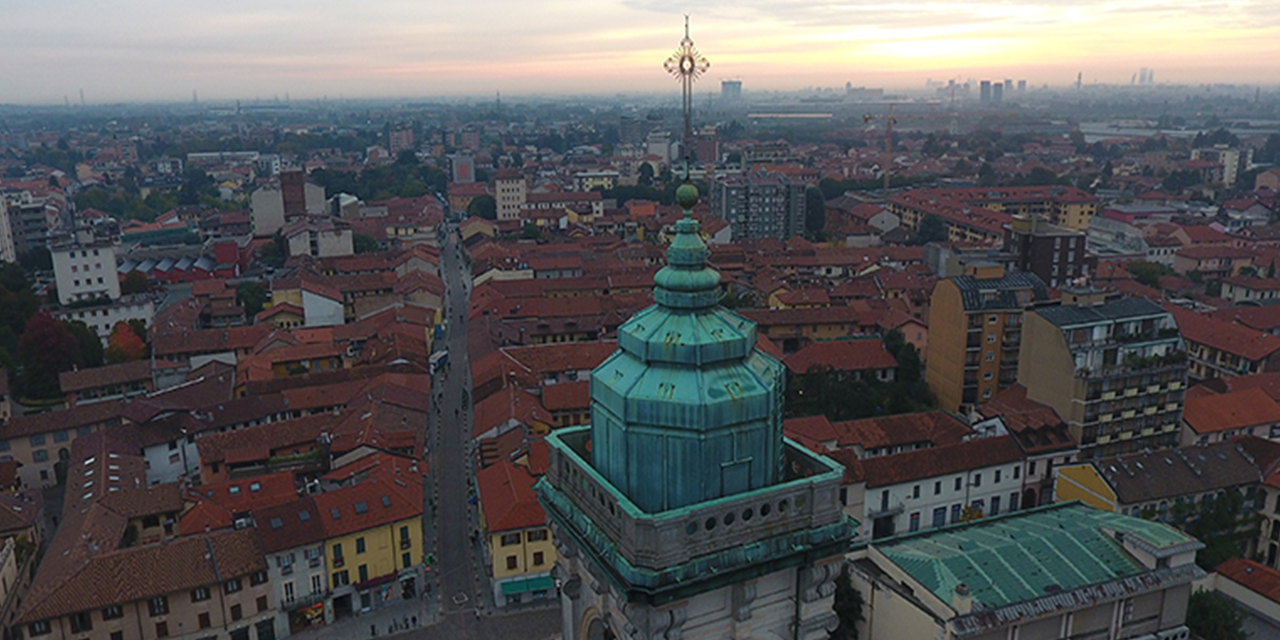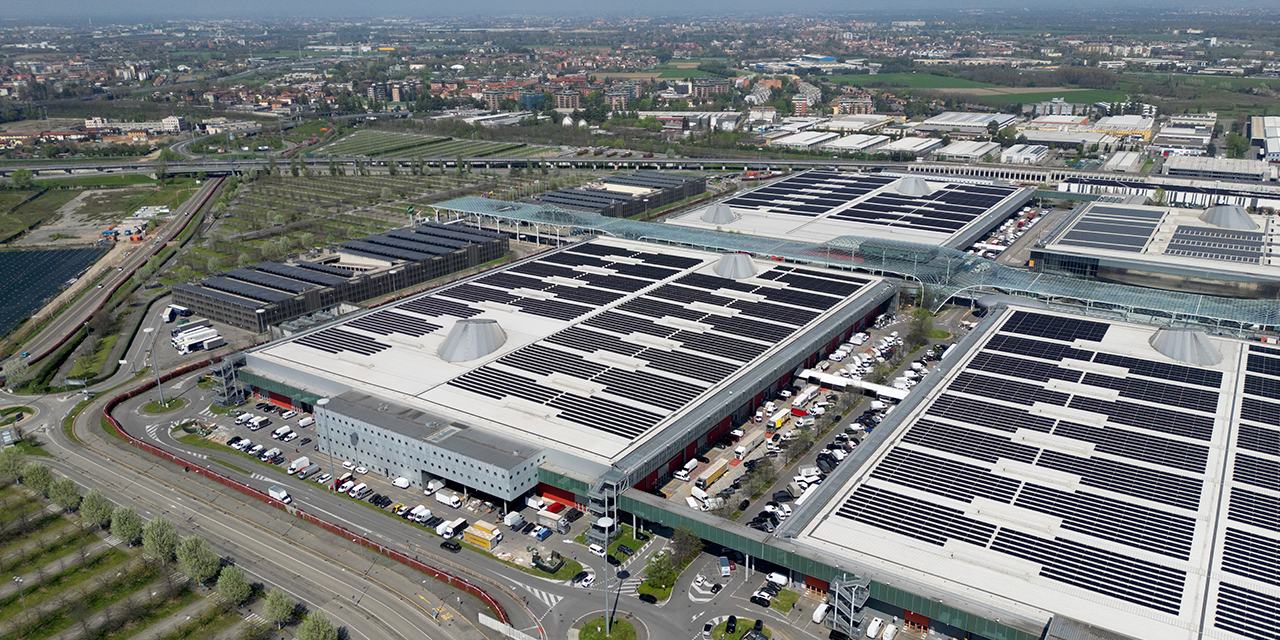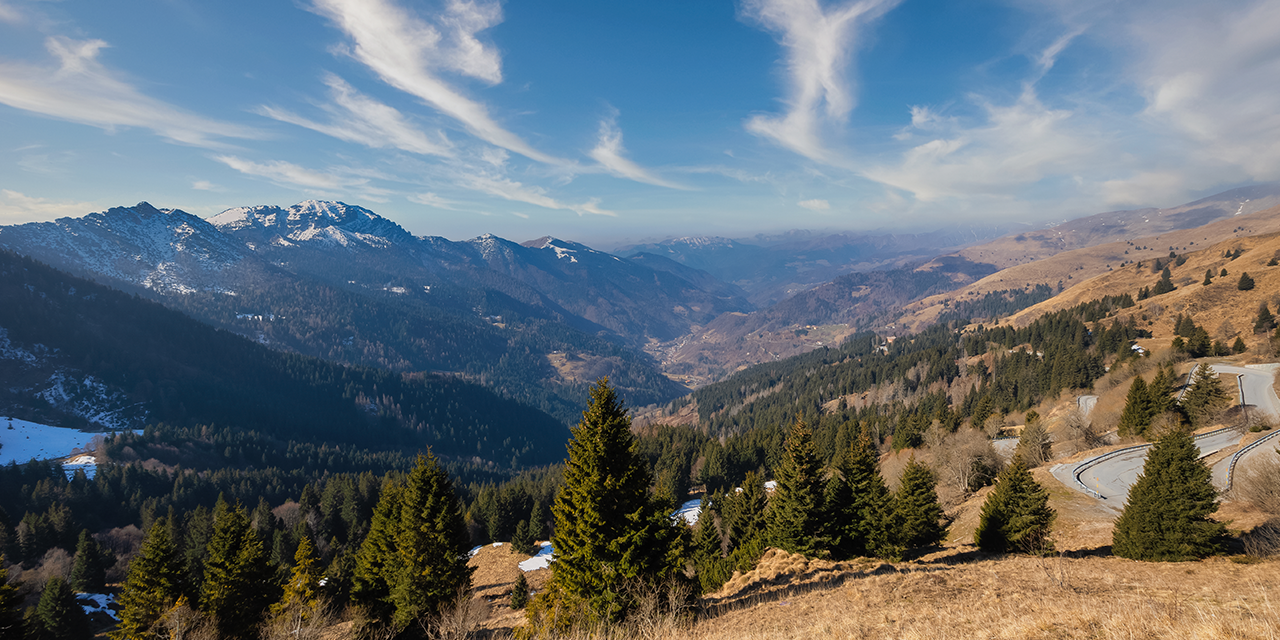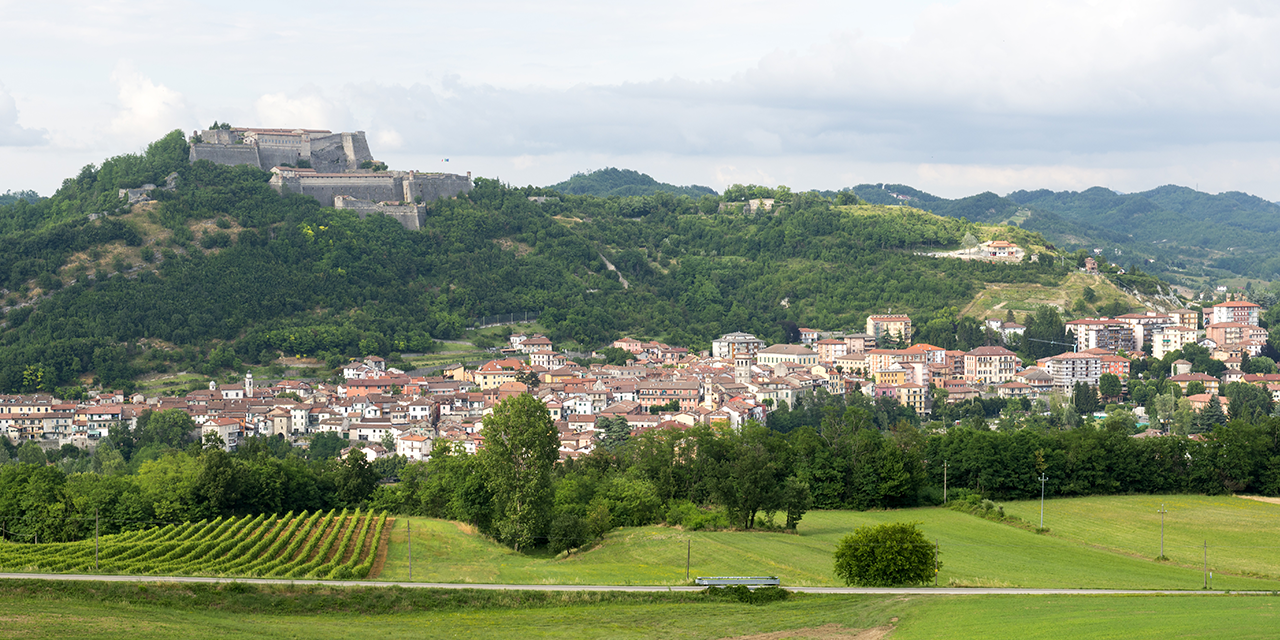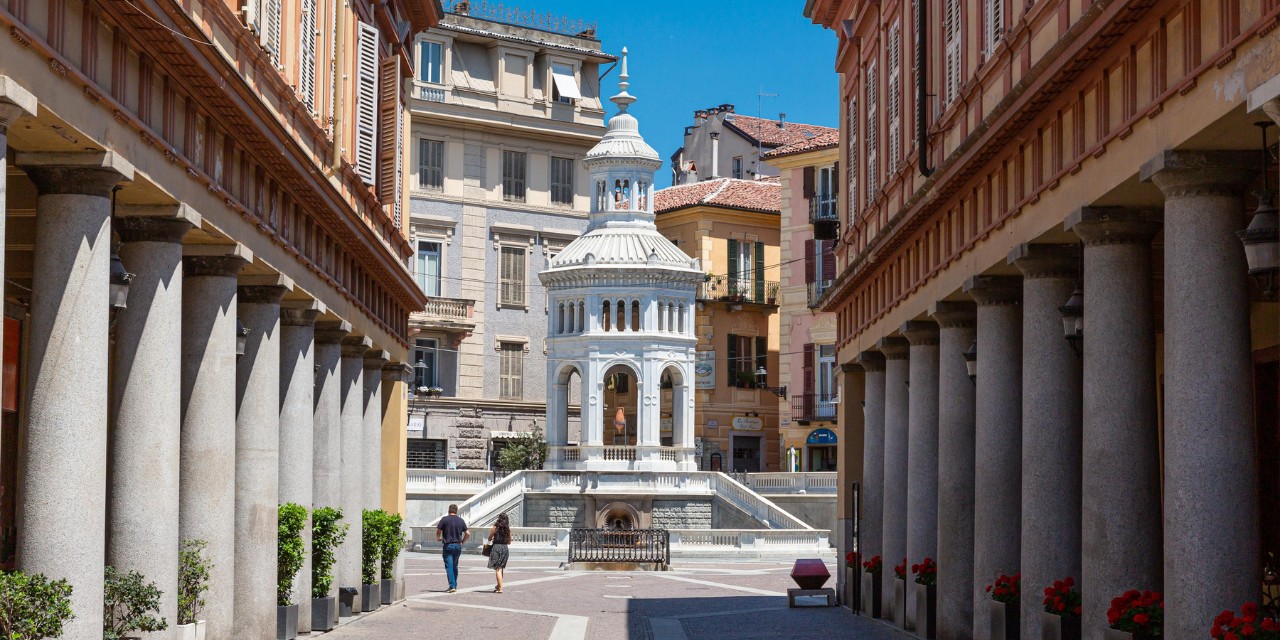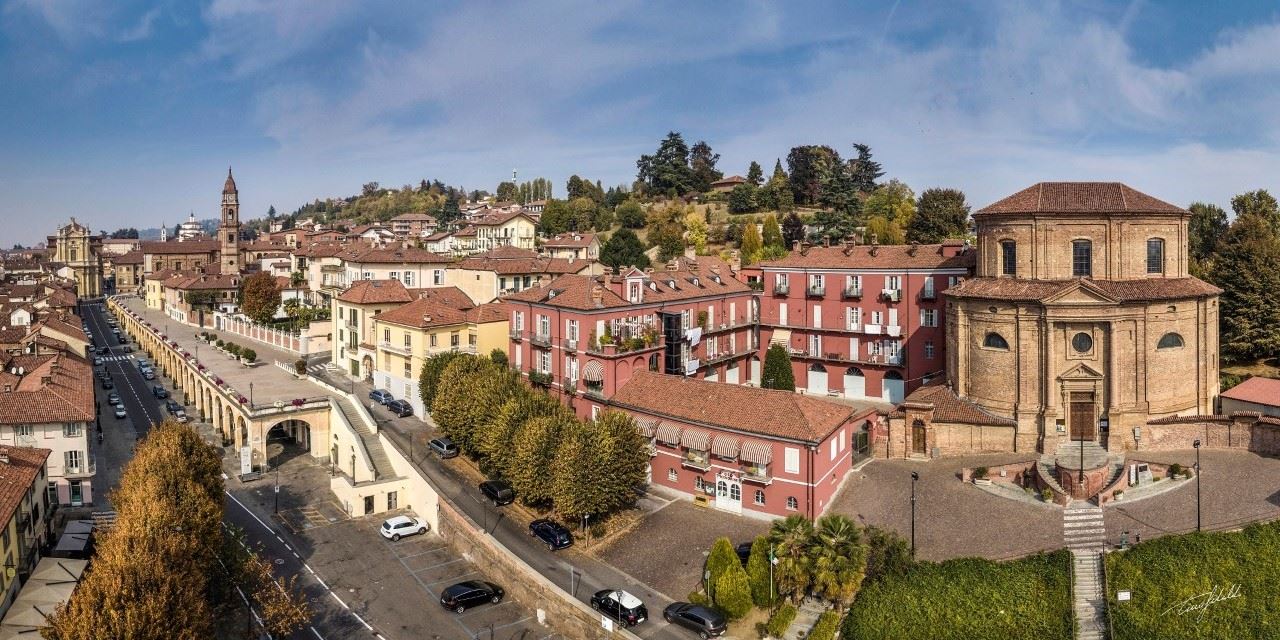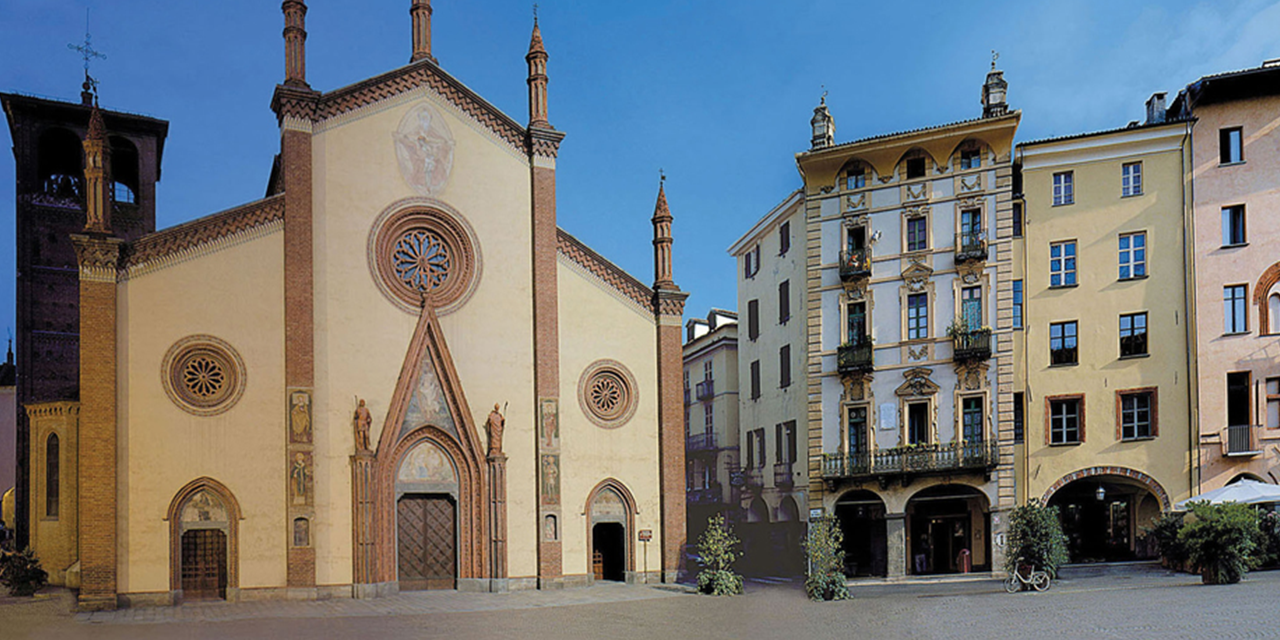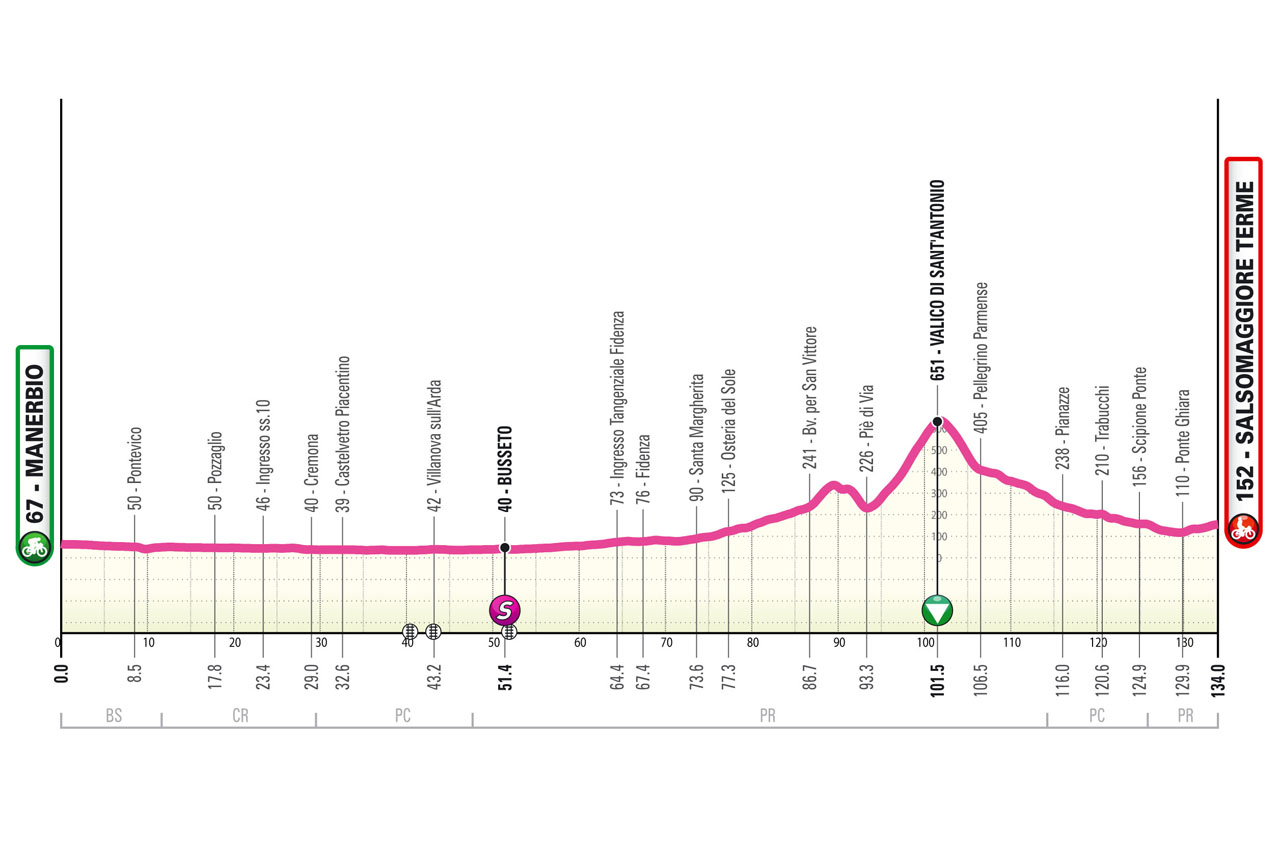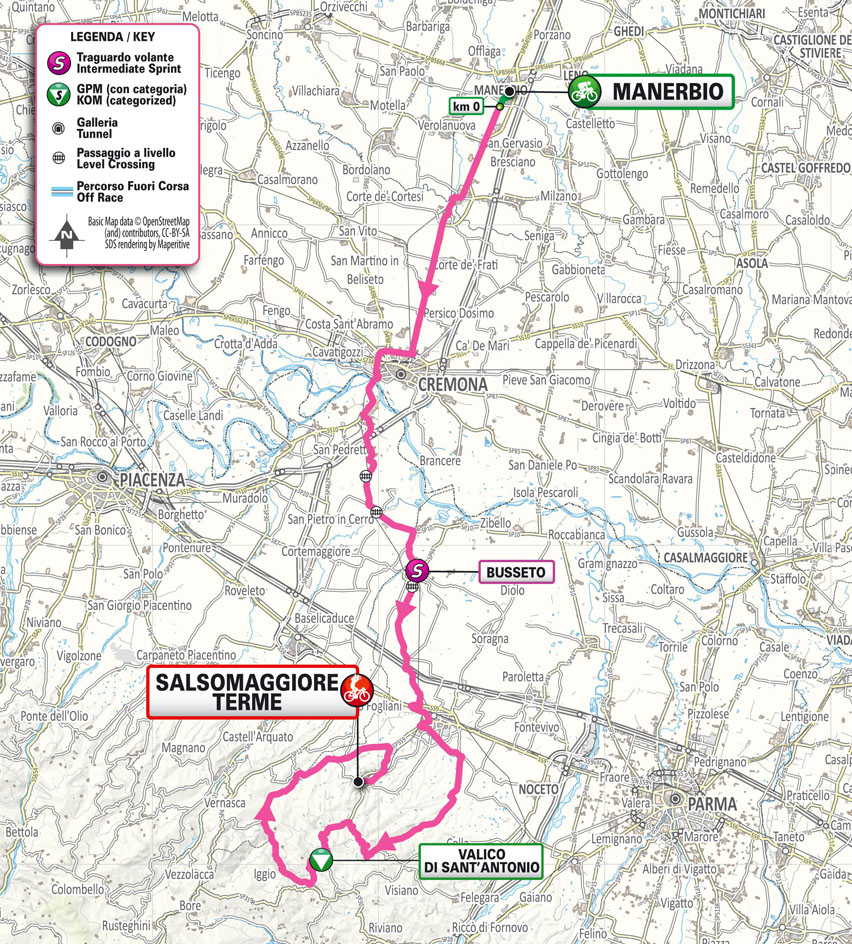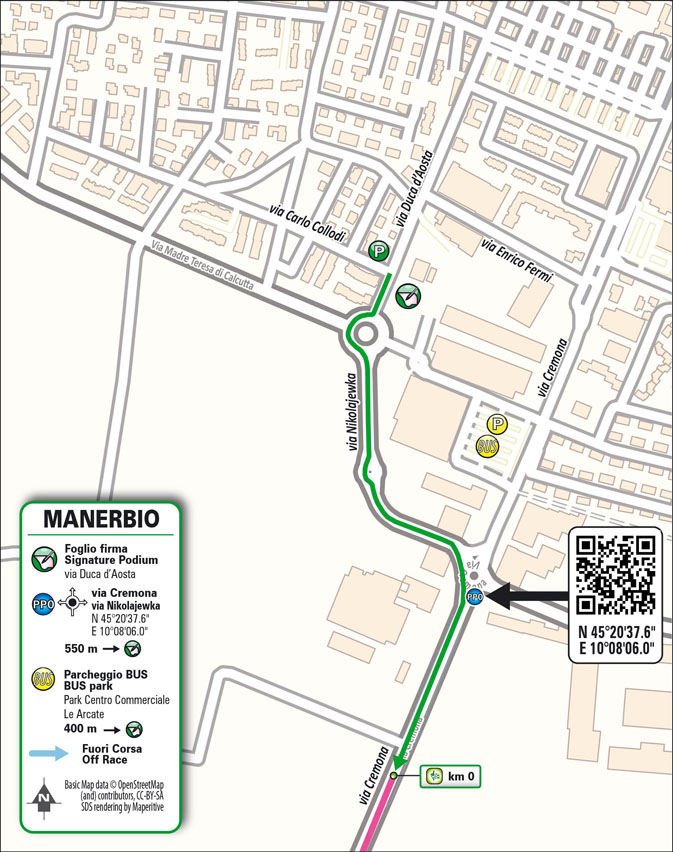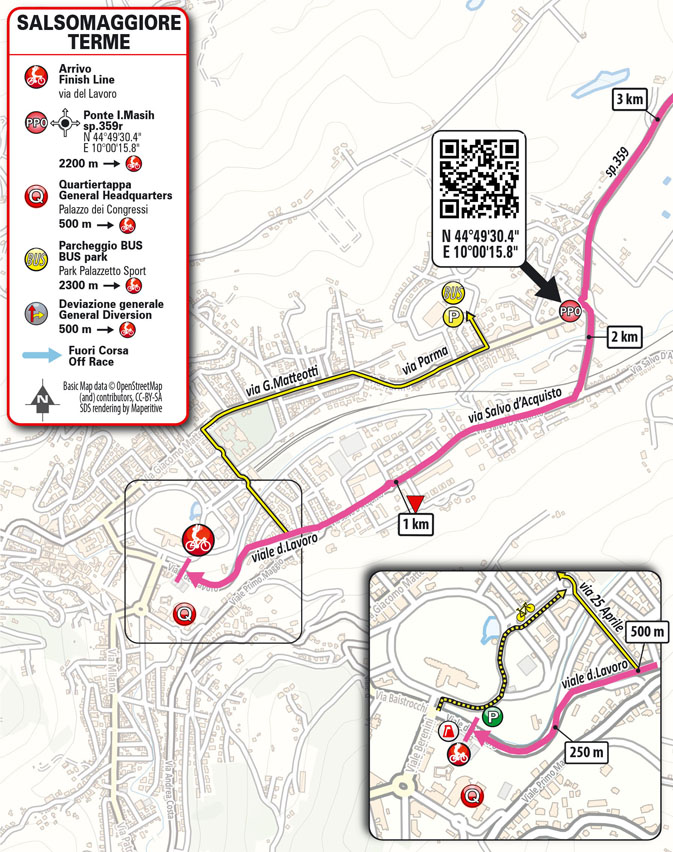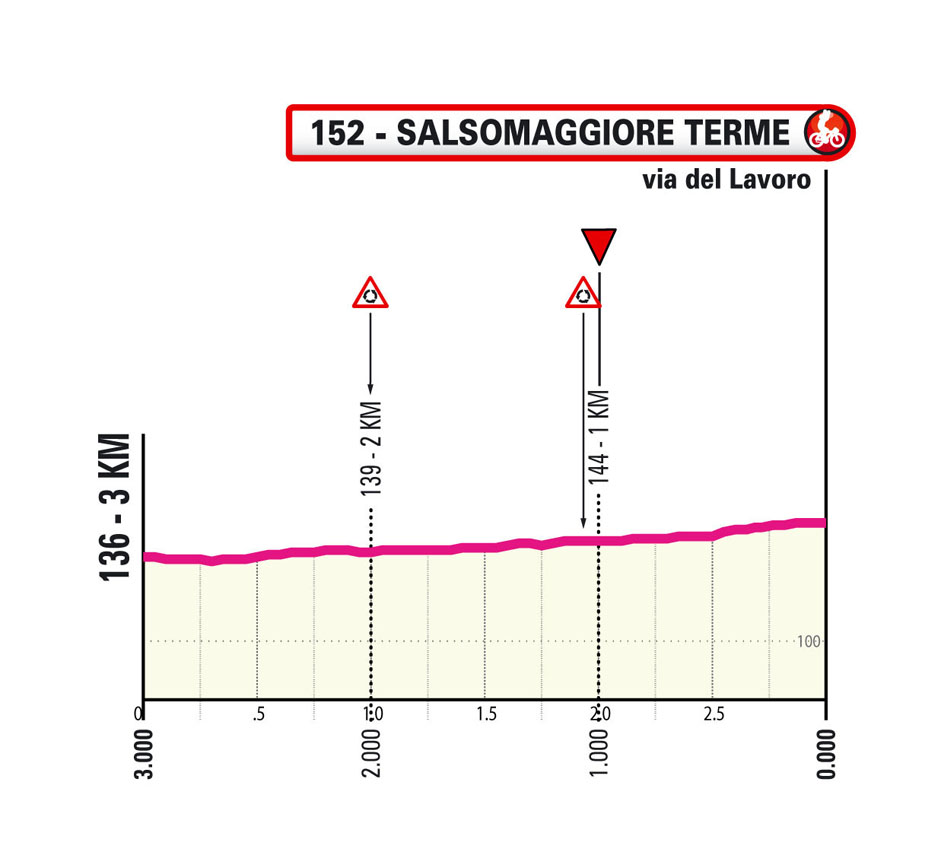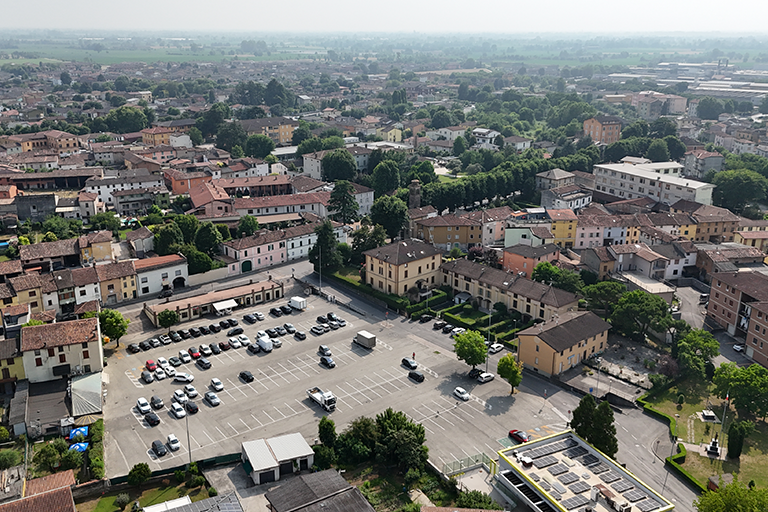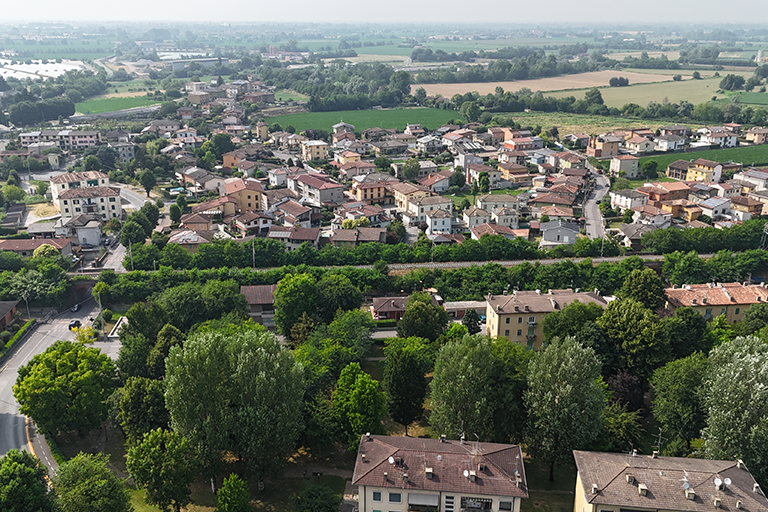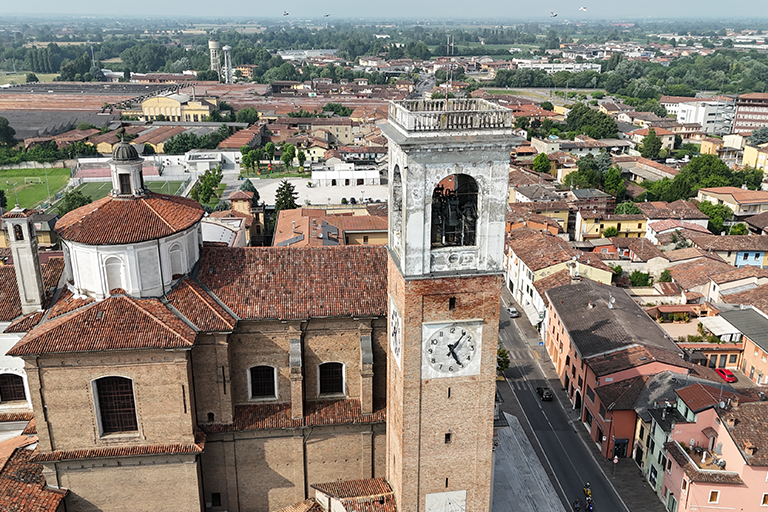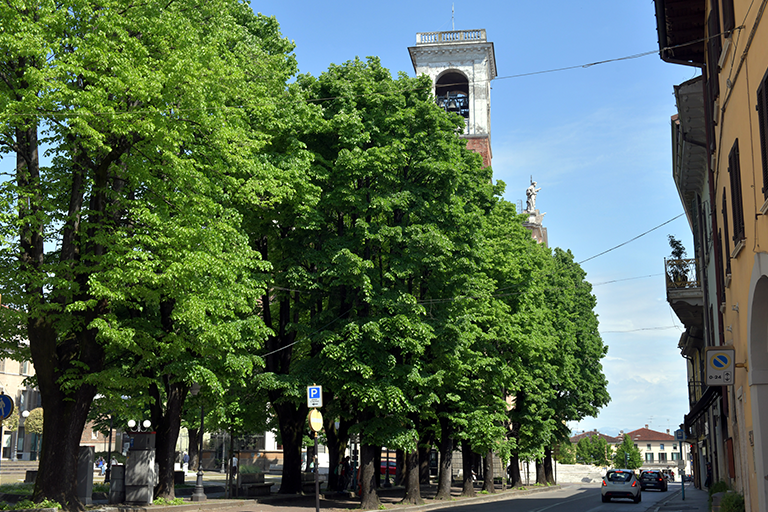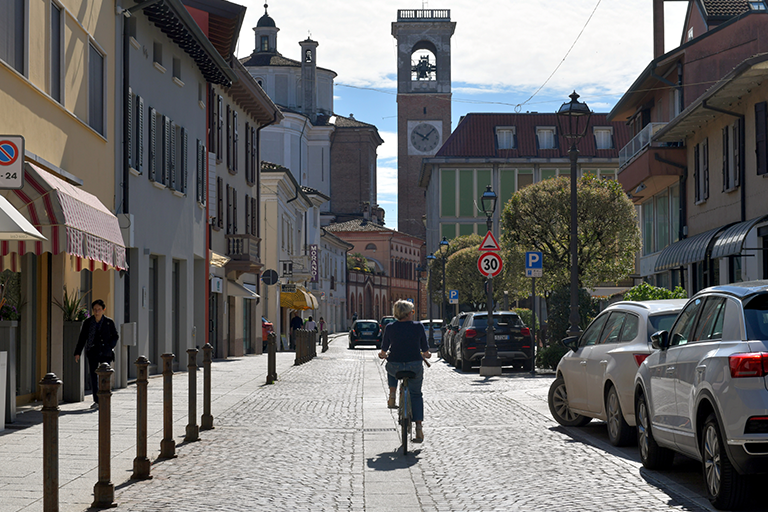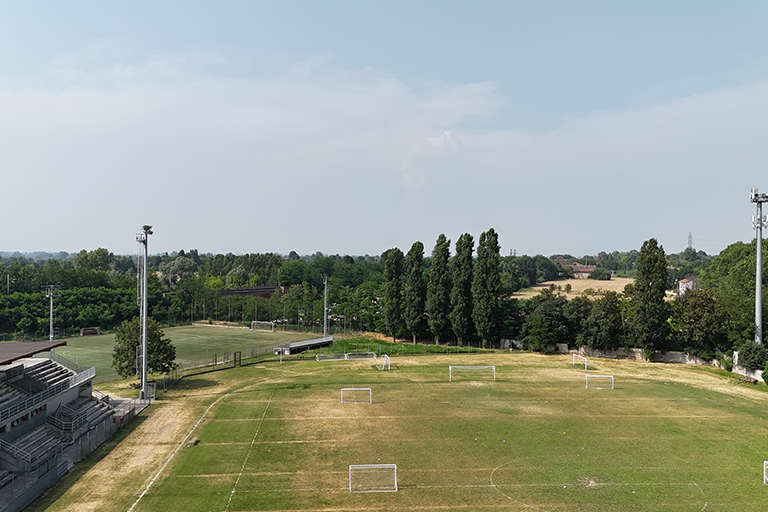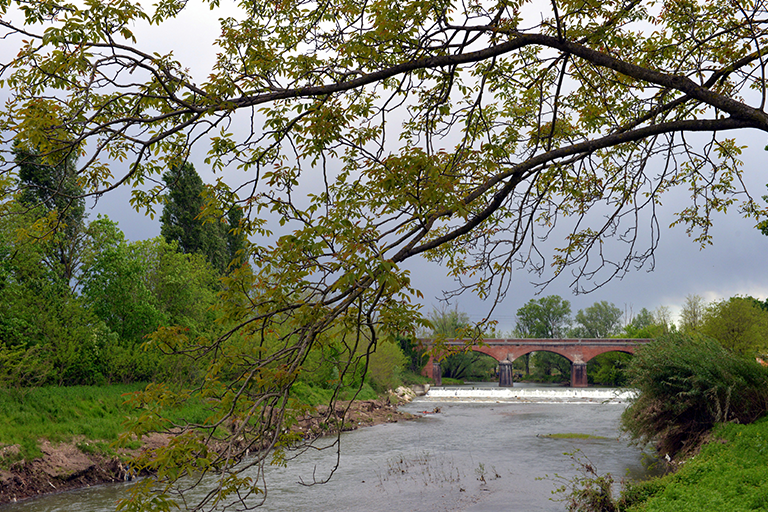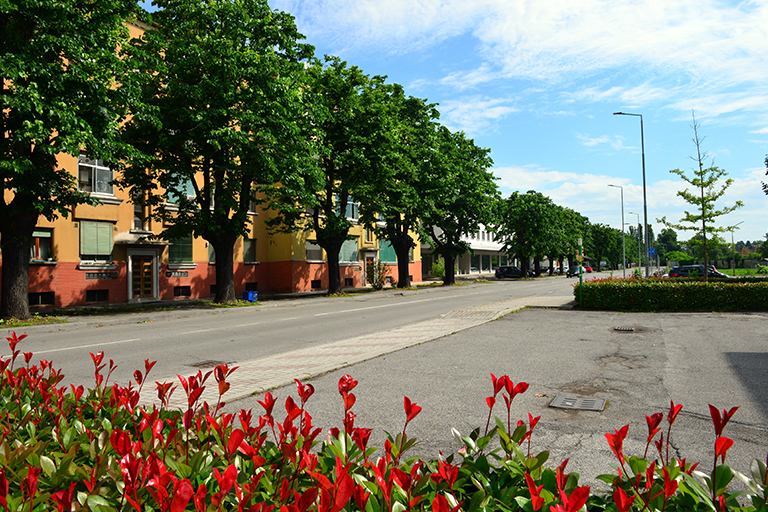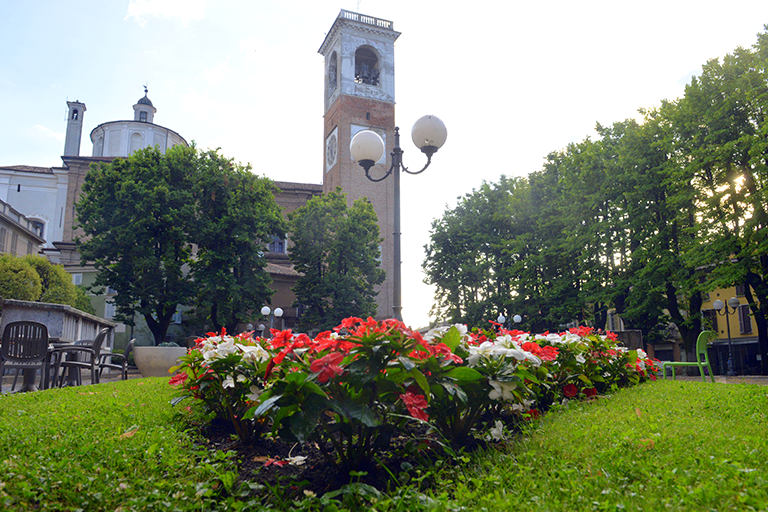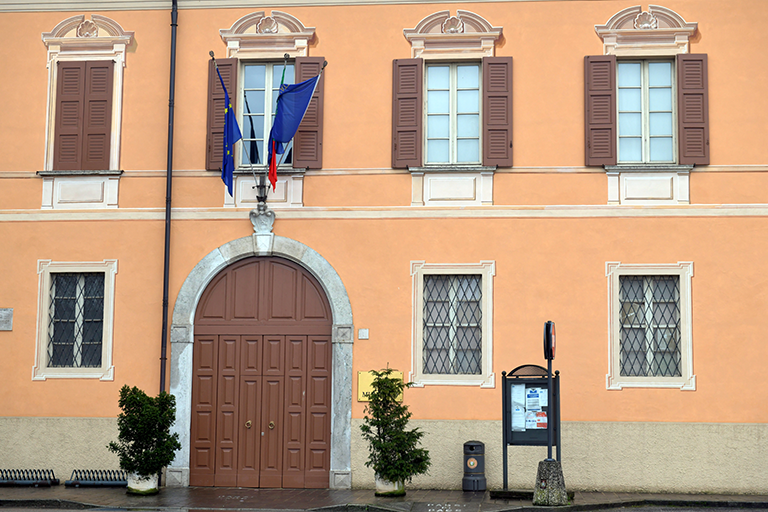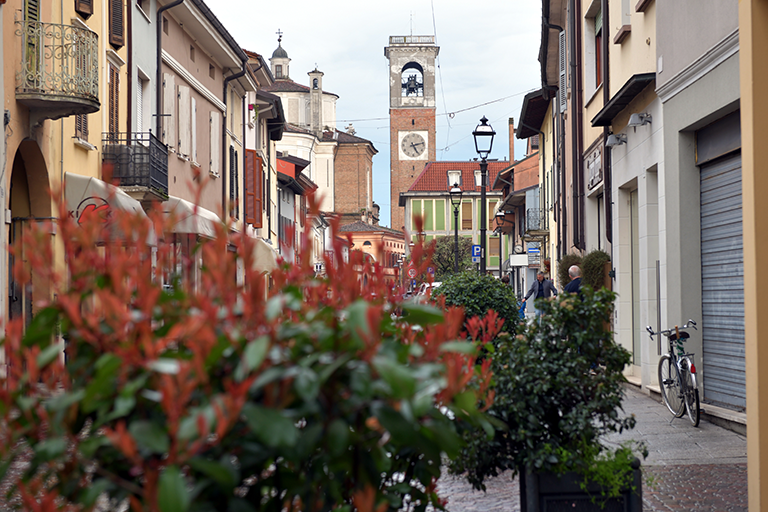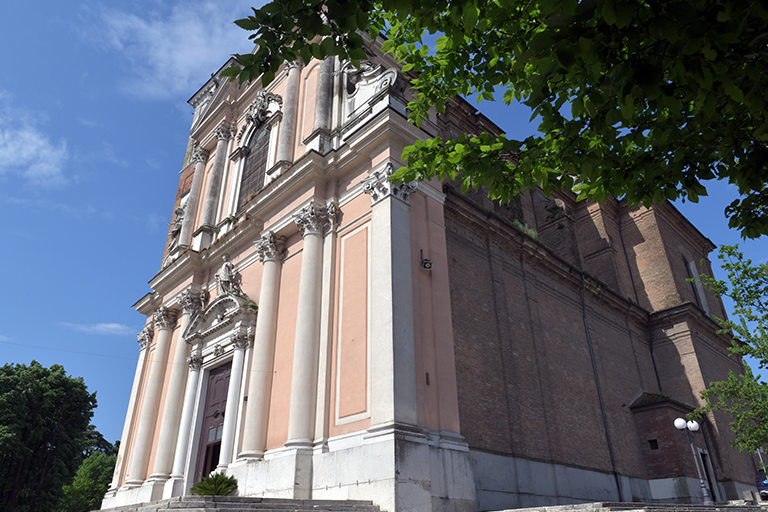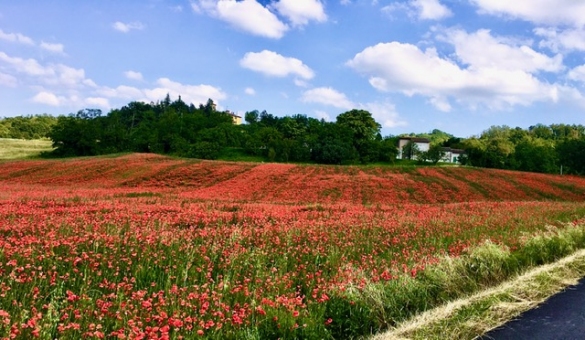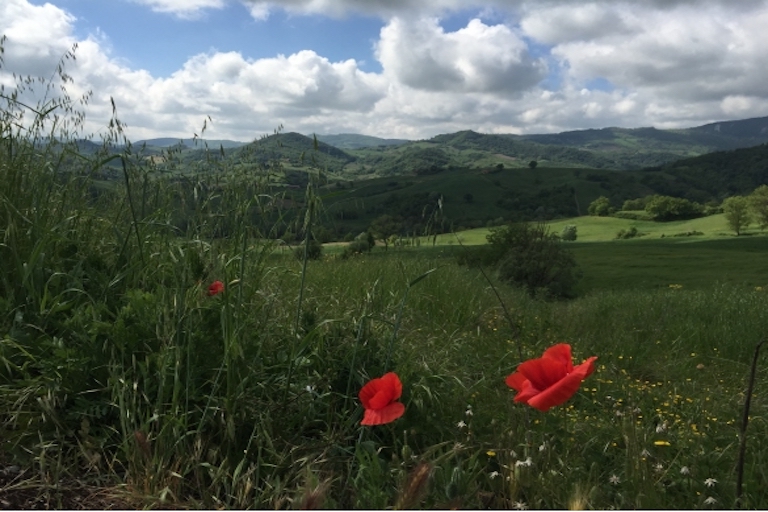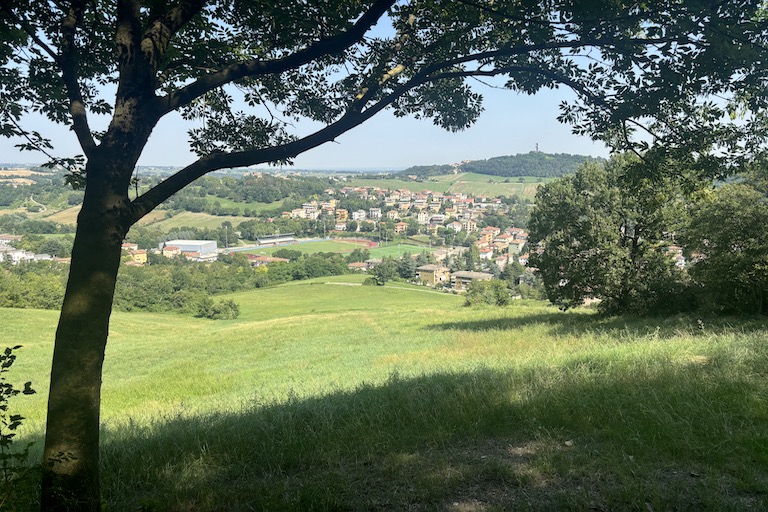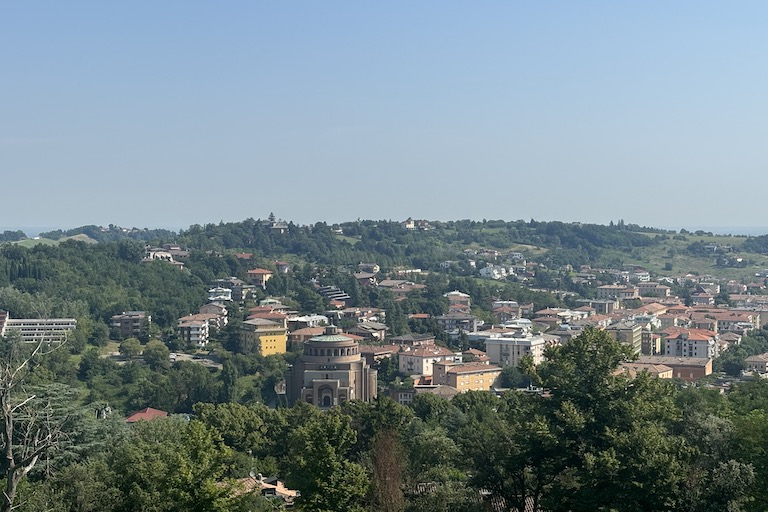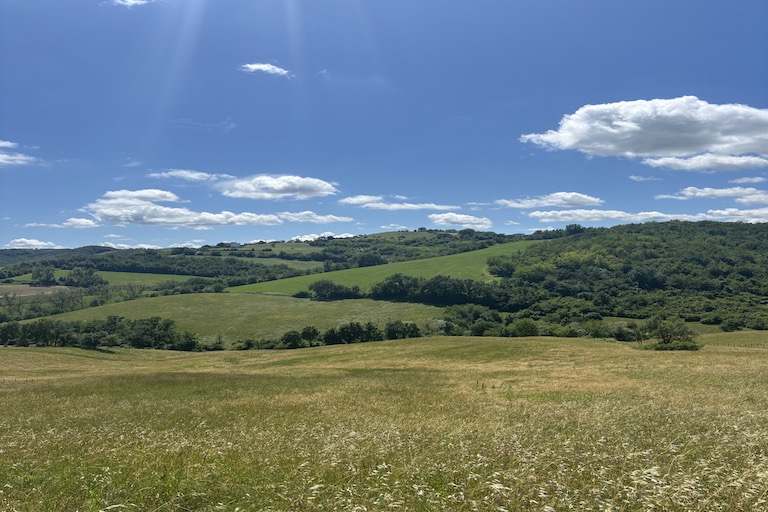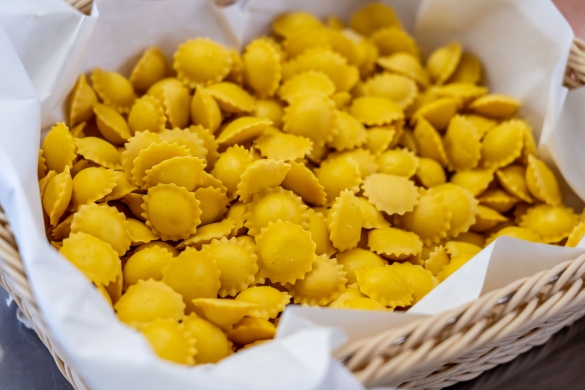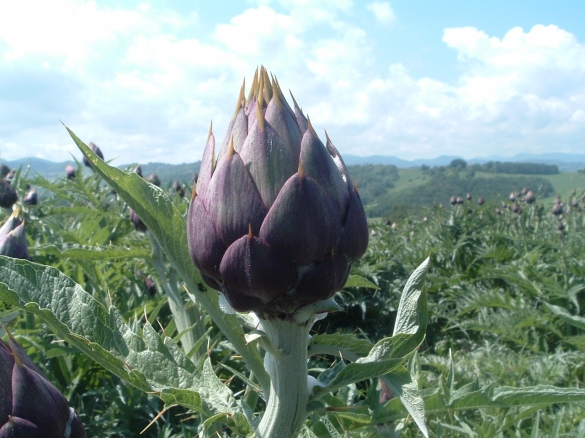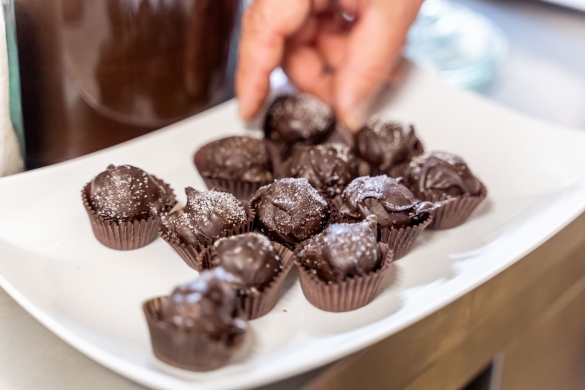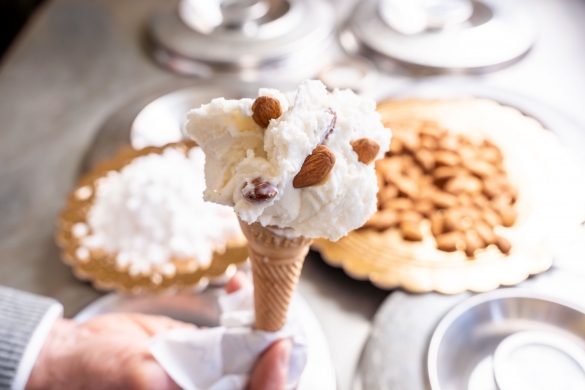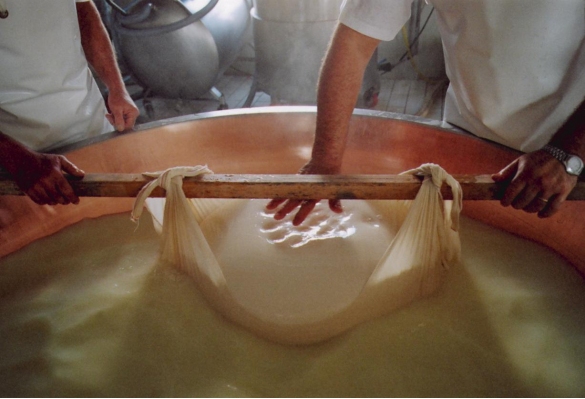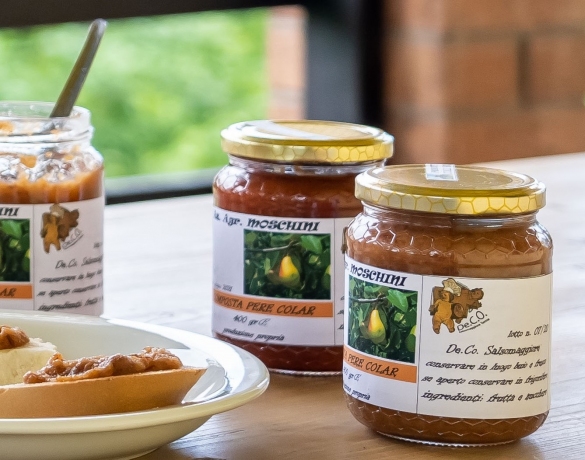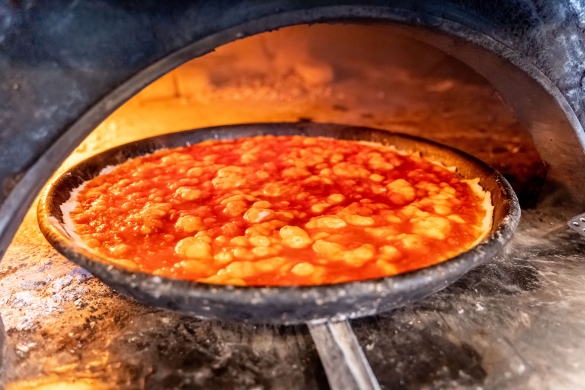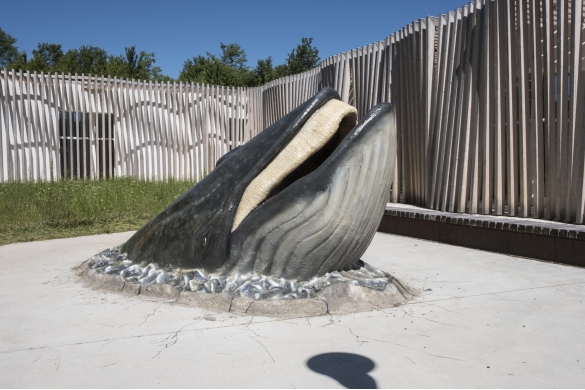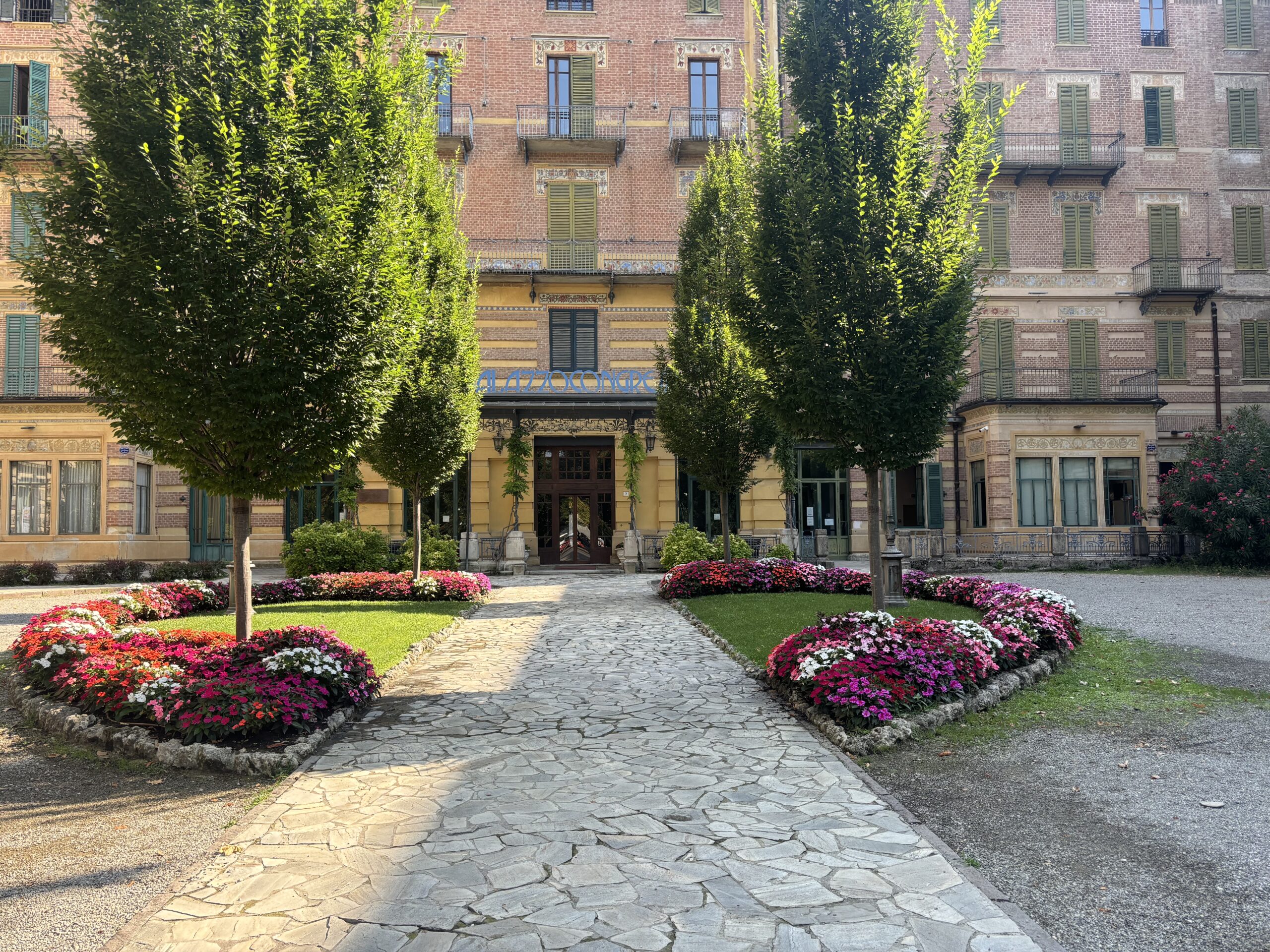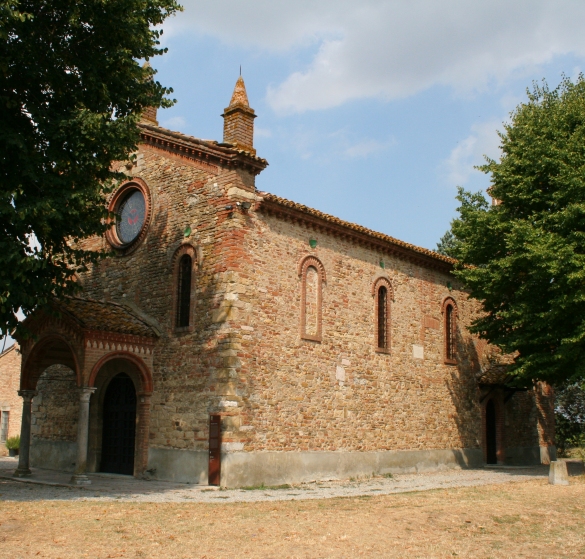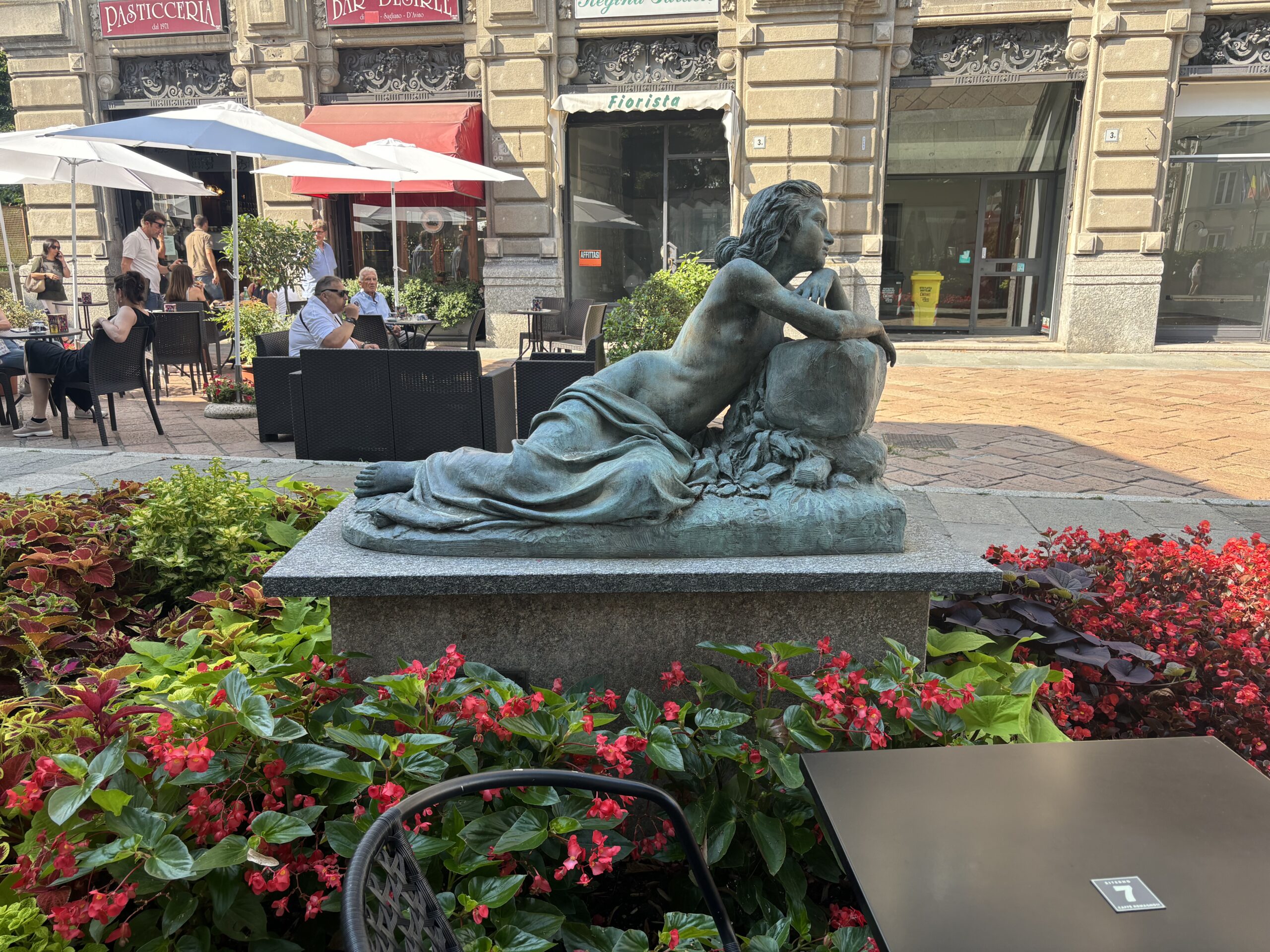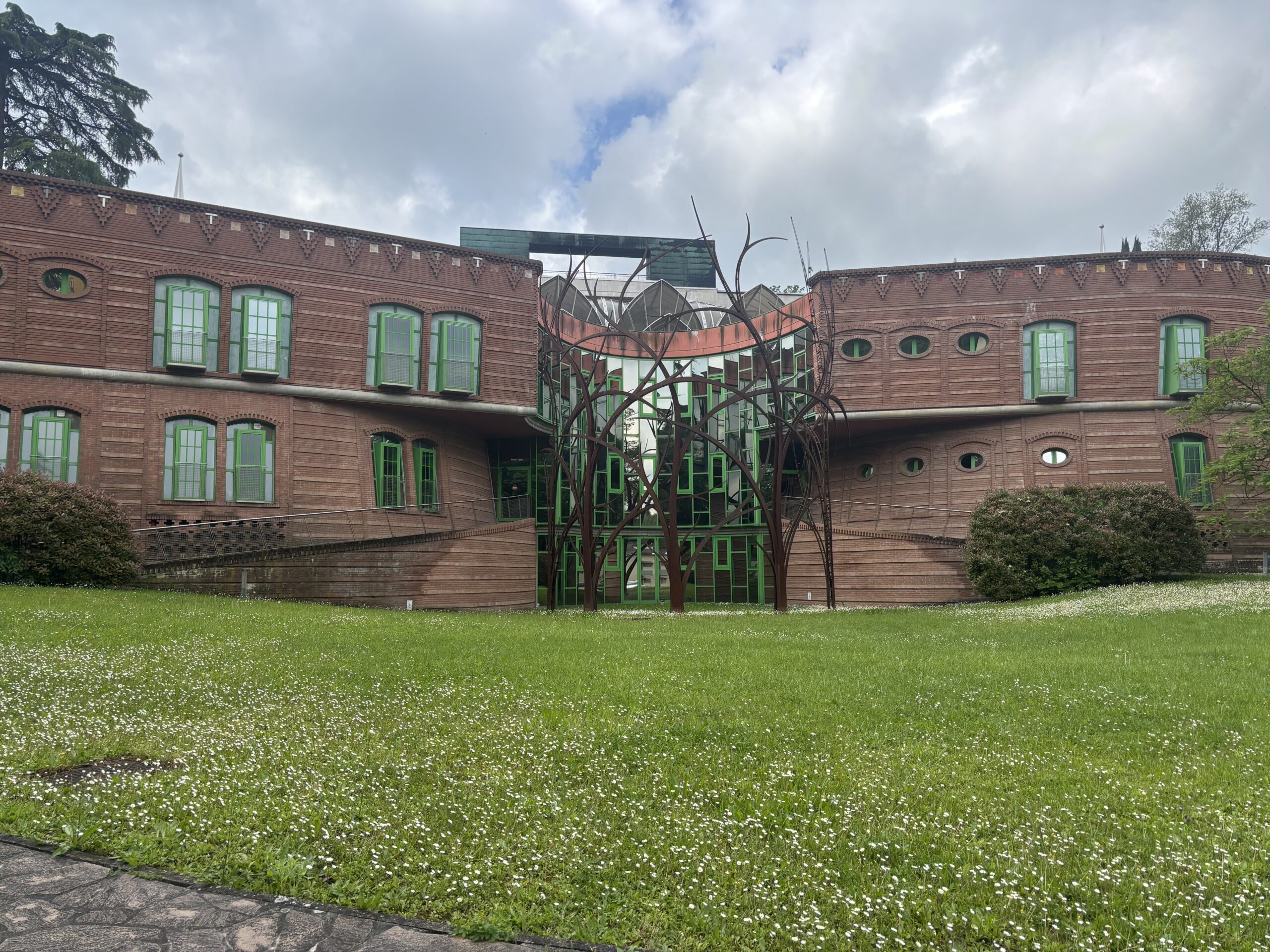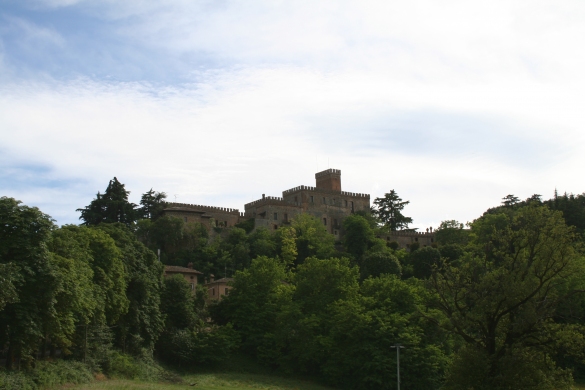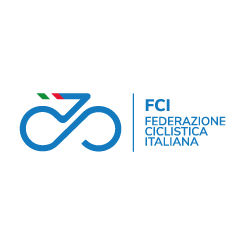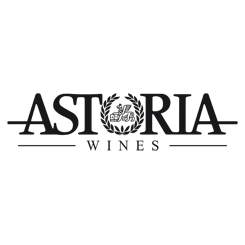learn more
technical info
profile
map
technical info
A mixed stage starting with a completely flat section until Fidenza, followed by a hilly portion with several medium-short climbs which will likely be the key challenges of the day. A reduced bunch sprint is expected.
Last Km
The final kilometers are flat and nearly straight, interrupted by a few roundabouts. The final bend is very wide and comes 300 meters before the finish.
start / finish
final kilometres
itinerary timetable
tourist info
Host city:
Manerbio
Overview
Manerbio is a lively town in the lower Brescia area, located along the historic Via Emilia axis, in the heart of the Lombard plain. Its origins date back to Roman times, as evidenced by numerous archaeological finds. Today, Manerbio is a modern, dynamic, and well-connected town, with a strong agricultural and industrial vocation. Walking through its streets, visitors can discover the charm of rural traditions combined with the energy of a community looking to the future. Cultural events, sports competitions, and initiatives to promote the local area make Manerbio a vibrant and welcoming destination.
Food
Manerbio’s cuisine reflects the authentic culinary tradition of Brescia and Lombardy. Typical dishes include casoncelli (stuffed pasta served with butter and sage) and manzo all’olio (braised beef in oil), a specialty of nearby Rovato that is popular throughout the area, spiedo with polenta. Pork-based products play an important role: artisanal cured meats such as salami, coppa, and pancetta are highly prized. Rice dishes are also popular, thanks to the presence of historic rice fields in the region. Typical desserts include the spongada (sweet bread) and various homemade cakes. Many agriturismi and local restaurants preserve these culinary traditions using high-quality local ingredients.
Wines
Although Manerbio itself is not a major wine-producing area, it offers a fine selection of wines from the nearby Franciacorta and Garda hills. Local tables often feature classic Brescian red wines, and for special occasions, the renowned Franciacorta DOCG sparkling wines. Craft beers produced by microbreweries throughout the province have also become increasingly popular in recent years. Finally, local grappas and traditional liqueurs complete the beverage selection.
Points of Interest
Manerbio offers numerous attractions for visitors. The historic center features landmarks such as the Church of San Lorenzo Martire, rich in works of art, and the Church of Santa Maria Assunta. Not to be missed is Piazza Cesare Battisti, the vibrant heart of the town, which hosts events and markets. The Memo Bortolozzi Civic Theater is a cultural hub and a reference point for local performing arts. Archaeology enthusiasts will enjoy the Civic Archaeological Museum, which houses important Roman-era artifacts.
Nature lovers can explore cycling paths along the Mella River and through the surrounding countryside. Manerbio is also known for its commitment to sports, with facilities such as the Sports Hall and numerous venues dedicated to cycling, football, and indoor sports. The town hosts major annual events, including cycling competitions that attract enthusiasts from all over Italy.
Salsomaggiore Terme
Overview
Nestled in the heart of Emilia-Romagna, among the gentle hills of Parma, lies Salsomaggiore Terme—a refined city rich in history and natural beauty. Renowned since the 19th century for its thermal waters, Salsomaggiore seamlessly blends wellness and culture in a captivating setting. Famous across Europe for its salsobromoiodic waters, it boasts a unique heritage in the realm of thermalism. The magnificent Berzieri Thermal Palace stands as its emblem, showcasing extraordinary Liberty and Art Deco architecture. Just a few kilometers away is Tabiano Terme, celebrated for its sulfur-rich waters, ideal for respiratory treatments.With a millennia-old history tied to salt, castles, parks, and hilly trails perfect for cycling, Salsomaggiore’s strategic location between Parma and Piacenza makes it an unmissable stop. Situated along the Via Emilia, it also serves as a gateway to the Food Valley and the Castles of the Duchy. Sports have always played a significant role in Salsomaggiore’s past and present: as early as 1926, cycling races were held within the city; in 1936, the Giro d’Italia made its first appearance here. Today, the well-regarded Sports Hall hosts numerous sporting events, championship trials, and international exhibitions. From July 18 to 20, 2025, Tabiano Terme will host the Italian National MTB XCO Championships. Welcoming and dynamic, the city embraces the Giro d’Italia Next Gen with its natural inclination towards wellness, sports, and hospitality.
Food
In Salsomaggiore Terme and its surrounding hamlets, flavor is an integral part of local identity. Situated in the heart of the Food Valley, this land is home to excellence such as Parmigiano Reggiano DOP, Prosciutto di Parma DOP, traditional cured meats like Culatello di Zibello, Coppa di Parma, Salame di Felino, and handmade fresh pasta: bread and cheese anolini in broth and herb-filled tortelli. Among the most authentic specialties are products protected by the Municipal Denomination (De.Co.), signifying deep-rooted traditions and uniqueness.
The Focaccia, a soft and fragrant leavened sweet bread, is a true symbol of local pastry art. Distinguished by its long natural fermentation, rich dough of butter and eggs, and aromas of vanilla, citrus, and honey, it’s more than just focaccia—it’s a handcrafted creation combining the softness of panettone with the crispness of a traditional baked dessert.
Another local pride is the thick pizza of Salsomaggiore, also recognized among De.Co. products. This soft, tall, and light tray-baked pizza traces its roots back to the thermal boom years when local bakers began preparing it to offer a simple and tasty meal to numerous visitors. Its uniqueness lies in the long fermentation and double baking, resulting in a soft interior and crispy exterior.
Other notable De.Co. products include:
- Artisanal Parmigiano Reggiano gelato
- Sweet and salty almond cake
- Salsomaggiore’s edible salt
- Salt-infused chocolate
- Malfatti with ricotta and herbs
- Compote made from Colar pears—an ancient local variety
- Spiny artichoke
Salsomaggiore is thus the ideal starting point for a journey through Emilia’s flavors: after a bike ride, a thermal treatment, or a stroll through the center, taking a seat at the table is the best way to savor the authentic soul of this land.
Wines
Exploring Salsomaggiore Terme and its surroundings wouldn’t be complete without a glass in hand. This region’s wine culture is deeply rooted in agricultural history and seasonal rhythms. The gentle, breezy hills between Parma and Piacenza have been home to vineyards and ancient knowledge for centuries. Here, authentic, convivial wines are produced—perfect companions to local cuisine and reflections of the profound bond between land and table.
Notable among them are the wines of the Colli Piacentini, a protected DOC area extending to the hills near Salsomaggiore. Gutturnio, a lively or still red wine, results from blending Barbera and Croatina grapes, ideal with cured meats, anolini, and roasted meats. Ortrugo, a light and sparkling white, is perfect as an aperitif or with appetizers and fish dishes. Malvasia di Candia Aromatica, produced in dry or sweet versions, stands out as a true local excellence—fragrant, floral, and refreshing.
On the Parma side, closer to Salsomaggiore, winemaking traditions manifest in small productions of great character, often tied to native grape varieties like Fortana and Lambrusco or local interpretations of international varieties.
Beyond wine, other typical beverages abound:
- Artisanal nocino, crafted from green walnuts harvested in June and macerated with spices and alcohol, serves as a classic local digestif.
- Bargnolino, known in the local dialect as Bargnulén and recognized among De.Co. products, is an alcoholic beverage made by infusing “bargnòl” berries—the blackthorn plant native to the Tuscan-Emilian Apennines. This unique liqueur boasts a fruity aroma and intense character. The recipe, passed down through generations, includes cinnamon, cloves, lemon zest, 95° alcohol, and still Malvasia wine, combined with ripe berries harvested in November.
Wineries, agritourisms, and small wine producers welcome visitors for tastings and guided tours—opportunities to discover not only the wines but also the histories of families who have cultivated vines with respect and passion for generations.
In Salsomaggiore’s territory, every sip tells a story—of land, labor, and conviviality.
Points of Interest
Salsomaggiore Terme enchants with its Liberty elegance, the beauty of its monuments, and the harmony between nature, culture, and wellness. Renowned throughout Italy for its salsobromoiodic thermal waters, rich in therapeutic properties, it has attracted visitors seeking health and relaxation for over a century. Beyond the thermal baths, Salsomaggiore offers a surprising architectural and landscape heritage, perfect for exploration on foot or by bicycle.
At the city’s heart stands the imposing and scenic Berzieri Thermal Palace, symbolizing Salsomaggiore’s thermal vocation. Inaugurated in 1923 and designed by Ugo Giusti and Galileo Chini, it represents one of Italy’s most fascinating examples of Art Deco and Oriental-influenced Liberty style. Its interior and exterior decorations, rich in mosaics, ceramics, frescoes, and precious marbles, transform the structure into a true “temple of wellness.”
Another gem is the Palazzo dei Congressi, a former thermal residence inaugurated in 1901 as the Grand Hotel des Thermes, now hosting events, concerts, and exhibitions. Its monumental façade evokes the splendor of the Belle Époque when Salsomaggiore was among Europe’s most sought-after destinations. Inside, visitors can admire halls adorned with Liberty stuccoes and frescoes, including the splendid Sala delle Cariatidi and the majestic Salone Moresco.
Beyond the thermal monuments, noteworthy sites include the Pieve di Contignaco, with its Romanesque bell tower, and the Church of San Nicomede, among the area’s oldest. History enthusiasts shouldn’t miss the MuMAB (Ancient Sea and Biodiversity Museum), which narrates the geological origins of the territory when, millions of years ago, a salty sea covered the area, giving rise to the thermal waters.
For a green retreat, Parco Mazzini—with its pond and Pagoda—and Parco Corazza offer shade and panoramic spots; the Stirone Park is ideal for relaxing walks and trekking. From here, one can explore the surrounding hills, dominated by the Castles of Scipione, Contignaco, and Tabiano, built in the Middle Ages to guard the area’s saltworks. Nearby, the Tabiano Thermal Baths provide specialized respiratory treatments, utilizing some of Europe’s most sulfate-rich sulfur waters.
Salsomaggiore also serves as a starting point for naturalistic and cultural itineraries: from the fossil- and biodiversity-rich trails of Alta Val Stirone to the surrounding historic villages like Vigoleno, Castell’Arquato, and Fontanellato, nestled in the Apennine landscape and connected by scenic cycling routes.
Thus, Salsomaggiore is much more than a thermal city—it’s a place where art, history, sports, nature, and wellness harmoniously converge, offering visitors a comprehensive and rejuvenating experience.
Videos Stage 04

Giro Next Gen 2025 | Stage 4 | Best Of
18 Jun 2025
Giro Next Gen 2025 | Stage 4 | Highlights 🇬🇧
18 Jun 2025
Giro Next Gen 2025 | Stage 4 | Last KM 🇬🇧
18 Jun 2025

